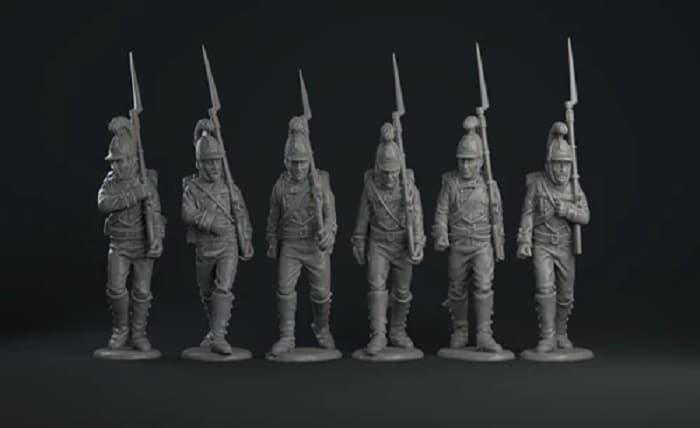Creative Potential: Guide to Resin 3D Print Files

The world of 3D printing is constantly evolving, pushing the boundaries of what’s possible. While filament printers have long been a mainstay, resin printing has emerged as a powerful alternative, offering stunning detail, intricate features, and smooth finishes. But to bring your resin printing dreams to life, you need the right starting point: high-quality resin 3D print files.
This comprehensive guide will be your compass in navigating the vast ocean of resin print files. We’ll dive deep into everything you need to know, from understanding different file formats to finding the perfect models for your projects, and everything in between. So, buckle up and get ready to unleash your creative potential with the magic of resin printing!
File Formats Demystified: STL, OBJ, and Beyond
Before embarking on your resin printing journey, it’s essential to understand the language of 3D models: file formats. The most common formats for resin printing are STL and OBJ, which represent the 3D geometry of your object using triangles. STL is simpler and widely supported, while OBJ offers additional features like textures and materials. Other formats like ZBrush ZPR or 3MF might be encountered for complex models.
Bounty of Resin Print Files
Now that you speak the language, it’s time to gather your materials! Luckily, the internet is teeming with online repositories offering a plethora of resin print files. Popular platforms include:
Thingiverse: A vast library of free and paid models, ideal for beginners and hobbyists.
MyMiniFactory: A community-driven platform with a focus on tabletop gaming and miniatures.
Cults3D: Features both free and paid models, with a curated selection and emphasis on quality.
Etsy: Discover unique and creative designs from independent sellers, often with commercial printing rights.
From Tiny Trinkets to Epic Dioramas: Choosing the Right Models
Selecting the right model for your resin printer depends on several factors:
Skill level: Start with simpler models to hone your printing skills before tackling intricate designs.
Printer size: Ensure the model’s dimensions fit your printer’s build volume.
Resin type: Certain materials like translucent or color-shifting resins might require specific model features.
Project goals: Are you printing for fun, functional use, or display? Choose models that align with your purpose.
Slicing and Dicing: Preparing Your Prints for Success
Once you’ve found the perfect model, it’s time to slice it using software like Chitubox or PrusaSlicer. Slicing prepares the model for printing by dividing it into thin layers and adding supports for overhangs. Pay attention to factors like layer height, support placement, and resin settings for optimal results.
Resin Printing 101: Beyond the Basics
Mastering resin printing involves more than just hitting the print button. Here are some valuable tips:
Dial in your settings: Experiment with different exposure times and retraction settings to find the sweet spot for your printer and resin.
Combatting resin demons: Learn about common issues like support failures, layer lines, and warping, and how to prevent them.
Post-processing perfection: After printing, remove supports carefully, wash and cure your prints thoroughly for optimal strength and finish.
Your Creative Mojo: Beyond Pre-Made Models
Don’t limit yourself to existing print files! Explore software like Blender or ZBrush to design your own models, tailor existing ones, or add unique touches. 3D sculpting opens a world of creative possibilities for truly personalized prints.
Community Connection: Sharing, Learning, and Growing
The 3D printing community is a vibrant and supportive space. Join online forums, participate in workshops, and connect with fellow enthusiasts. Sharing knowledge, troubleshooting challenges, and learning from others will accelerate your resin printing journey.
Conclusion:
Resin 3D printing is a gateway to a world of limitless creativity. With the right knowledge, resources, and a dash of experimentation, you can transform your digital dreams into tangible reality. So, dive into the world of resin print files, unleash your inner maker, and let your imagination take flight!
Read more about: how2invest
FAQ
- What resin printer should I buy?
Research your options based on budget, skill level, and desired print quality. Popular choices include Elegoo Mars, Anycubic Photon, and Phrozen Sonic Mini.
- Is resin printing safe?
Resin fumes can be harmful. Always wear gloves and a mask while handling resin and ensure proper ventilation in your printing area.
- How much does resin printing cost?
The cost of resin printing depends on several factors, such as the type of resin printer you use, the amount of resin you use, and the complexity of the models you print. However, it is generally more expensive than filament printing.
- What are some safety tips for resin printing?
In addition to wearing gloves and a mask, it is important to wash your hands thoroughly after handling resin and to avoid getting it on your skin or in your eyes. You should also store resin in a cool, dark place and dispose of it properly.
- Where can I learn more about resin printing?
There are many resources available online and in libraries that can teach you more about resin printing. You can also find helpful communities of resin printers online and in person.
Read more about: how2invest




